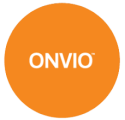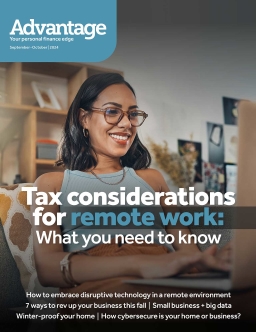From Memorial Day through Labor Day our Office Closes at Noon on Friday's
FAQs: Multichannel marketing for small businesses

From remote work to food delivery and curbside pickup at restaurants, from digital entertainment to on-demand health and wellness services, the COVID-19 pandemic forced even avowed fans of brick-and-mortar businesses to adjust to virtual interaction with the businesses they patronize. And even as things slowly return to (sort of) normal, this touchless way of doing business doesn’t appear to be going away.
If your customers and potential leads have scattered off to the cyberwinds in the past year, how do you find more? The key is to be where they are—and that’s where multichannel marketing (also known as omnichannel or cross-channel marketing) can come in.
If you’ve never heard of multichannel marketing… and even the idea sends you into a tizzy because you already have your hands full with one-channel marketing, don’t panic: You may already be doing it without realizing it.
The following FAQs offer the basics for taking your marketing to the next level.
Q: What is multichannel marketing?
A: Multichannel marketing is a marketing strategy that works on the theory that customers are more likely to buy when they can use their favorite channel. It’s all about the choices both existing and potential customers have to communicate with your brand—and it makes it easy for them to switch between channels if they choose to do so. Those channels can include:
A brick-and-mortar store/office
Your website’s e-commerce store
Catalogs
Phone ordering
An email newsletter
Social media (Facebook, Twitter, Instagram, LinkedIn)
Google My Business and/or Google Ads
Q: What’s so great about multichannel marketing?
A: You’ll reach more customers on the channels where they’re most likely to make a purchase. Grandma Sue might never look for deals on Facebook, but she’ll order from a paper catalog in a heartbeat. Granddaughter Sara, on the other hand, haunts Instagram daily, looking for the latest products endorsed by her favorite influencers. You’ll also be able to get customer feedback that allows you to make more informed decisions about your products and services and proactively fix issues.
Q: Okay, I have those channels. That means I don’t have to do anything else, right?
A: Not exactly. If you’re active in any or all of these channels, you’ve taken the first step. However, for effective multichannel marketing, you’ll need to tailor your marketing content to and speak the language of the audience in each channel.
Q: Uh…speak the language?
A: Social media followers tend to fall into different personality types, depending on the platform(s). It’s possible that not all of these channels are right for your business, but if you keep these brief profiles in mind, you’ll be able to speak the right language for the audiences on the platforms you do use.
Facebook is the place for news, updates, interaction and connection. It’s how family and friends stay in touch with each other, so you may find a real diversity of ages and backgrounds among your followers. Warmth, personality and humanity will go a long way toward building a connection here.
Instagram is the place to see and be seen. It’s all about the visual: carefully curated photos and other content. Followers tend to skew younger here, so work with visuals in mind and offer a casual, friendly and honest tone.
Twitter is the place for fast-breaking, to-the-point news. Like Facebook, you’ll find diversity here, but you’ll also find a group that isn’t shy about letting businesses know when they’re happy or unhappy—and those tweets may be shared ad infinitum. Keep it short and snappy…and pay attention to the replies.
LinkedIn is the place for businesspeople. Every company should have a LinkedIn profile; it’s where followers “meet” your business and get an idea of your products and services. Keep posts professional and share interesting content about your company or industry in general.
Google My Business and Google Ads will reach a broader, more diverse audience. This is where many prospects will meet you for the first time so try extra hard to put your best foot forward here. It may be the place to include great reviews to highlight your professionalism, sincerity and credibility.
Q: What about emails, newsletters or snail mail? Should I bother?
A: Yes! Email and newsletters are a good way to keep in touch with your audience. People are hungry for readable, credible and informational content. And given the screen fatigue so prevalent these days, snail mail is having its moment in the sun again. A fun and intriguing postcard or catalog offers a nice change of pace.
Q: Do I need to do a different campaign in each channel?
A: If you have the time and energy, go for it. But you can also take one great idea and use it between all channels, adjusting the voice and look to match the audience. For example, a newsletter can reward loyal customers with a discount coupon while a video on Instagram offers followers an exclusive sale preview.
Wrapping it up…
This article only scratches the surface of multichannel marketing, but it offers a good roadmap to get you moving. And you can start slow. For example, if you know your potential customers aren’t on Instagram, skip it and focus on the channels where you know prospects are.
Experiment with different aspects of a campaign—colors, images, copy, calls to action—to see what works within the different channels. Don’t be afraid to try new things as you create marketing ideas that allow all of your channels to work together. Above all, allow yourself to have fun building a marketing strategy to bolster your business.
Back to issue










